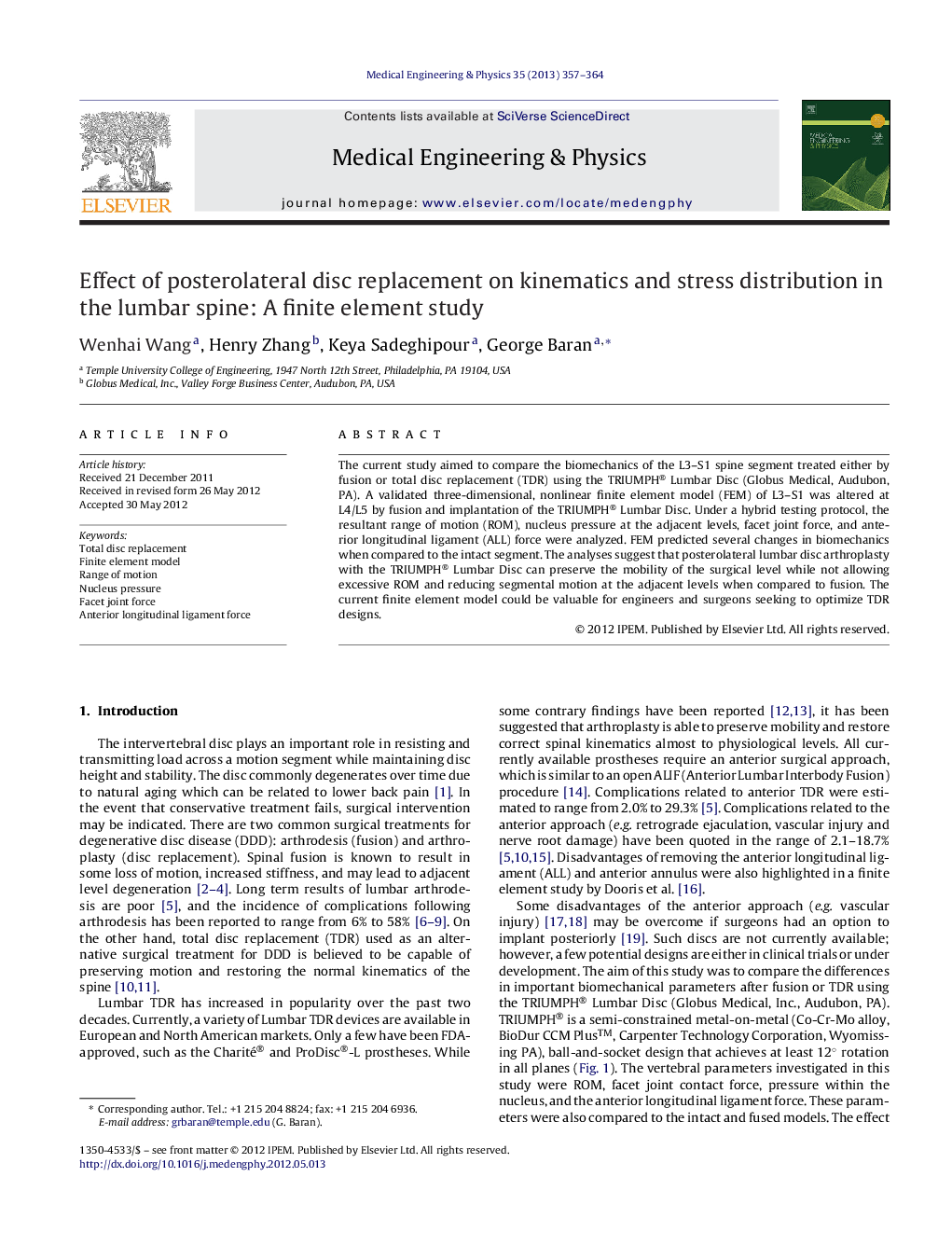| Article ID | Journal | Published Year | Pages | File Type |
|---|---|---|---|---|
| 10435108 | Medical Engineering & Physics | 2013 | 8 Pages |
Abstract
The current study aimed to compare the biomechanics of the L3-S1 spine segment treated either by fusion or total disc replacement (TDR) using the TRIUMPH® Lumbar Disc (Globus Medical, Audubon, PA). A validated three-dimensional, nonlinear finite element model (FEM) of L3-S1 was altered at L4/L5 by fusion and implantation of the TRIUMPH® Lumbar Disc. Under a hybrid testing protocol, the resultant range of motion (ROM), nucleus pressure at the adjacent levels, facet joint force, and anterior longitudinal ligament (ALL) force were analyzed. FEM predicted several changes in biomechanics when compared to the intact segment. The analyses suggest that posterolateral lumbar disc arthroplasty with the TRIUMPH® Lumbar Disc can preserve the mobility of the surgical level while not allowing excessive ROM and reducing segmental motion at the adjacent levels when compared to fusion. The current finite element model could be valuable for engineers and surgeons seeking to optimize TDR designs.
Related Topics
Physical Sciences and Engineering
Engineering
Biomedical Engineering
Authors
Wenhai Wang, Henry Zhang, Keya Sadeghipour, George Baran,
